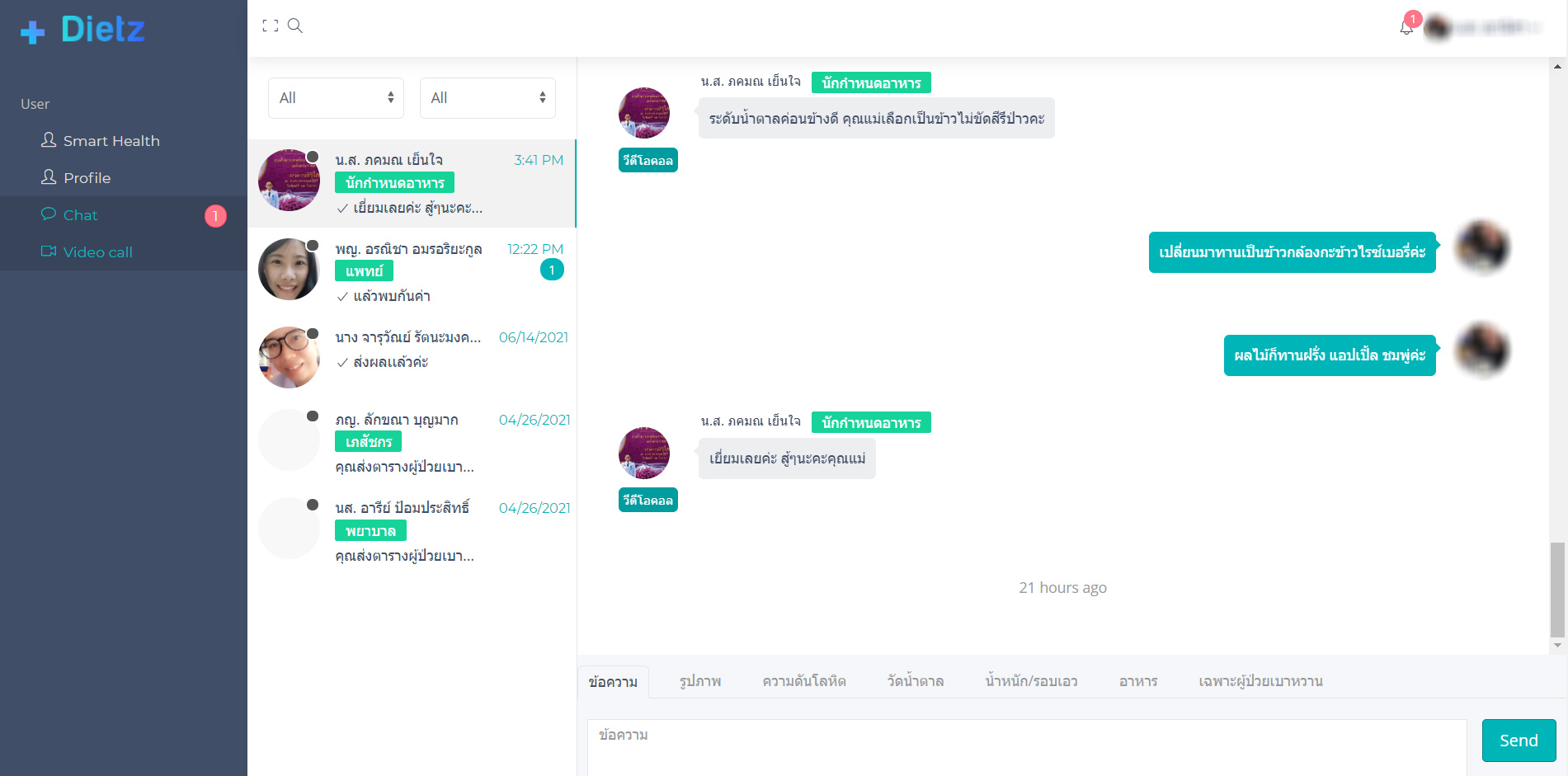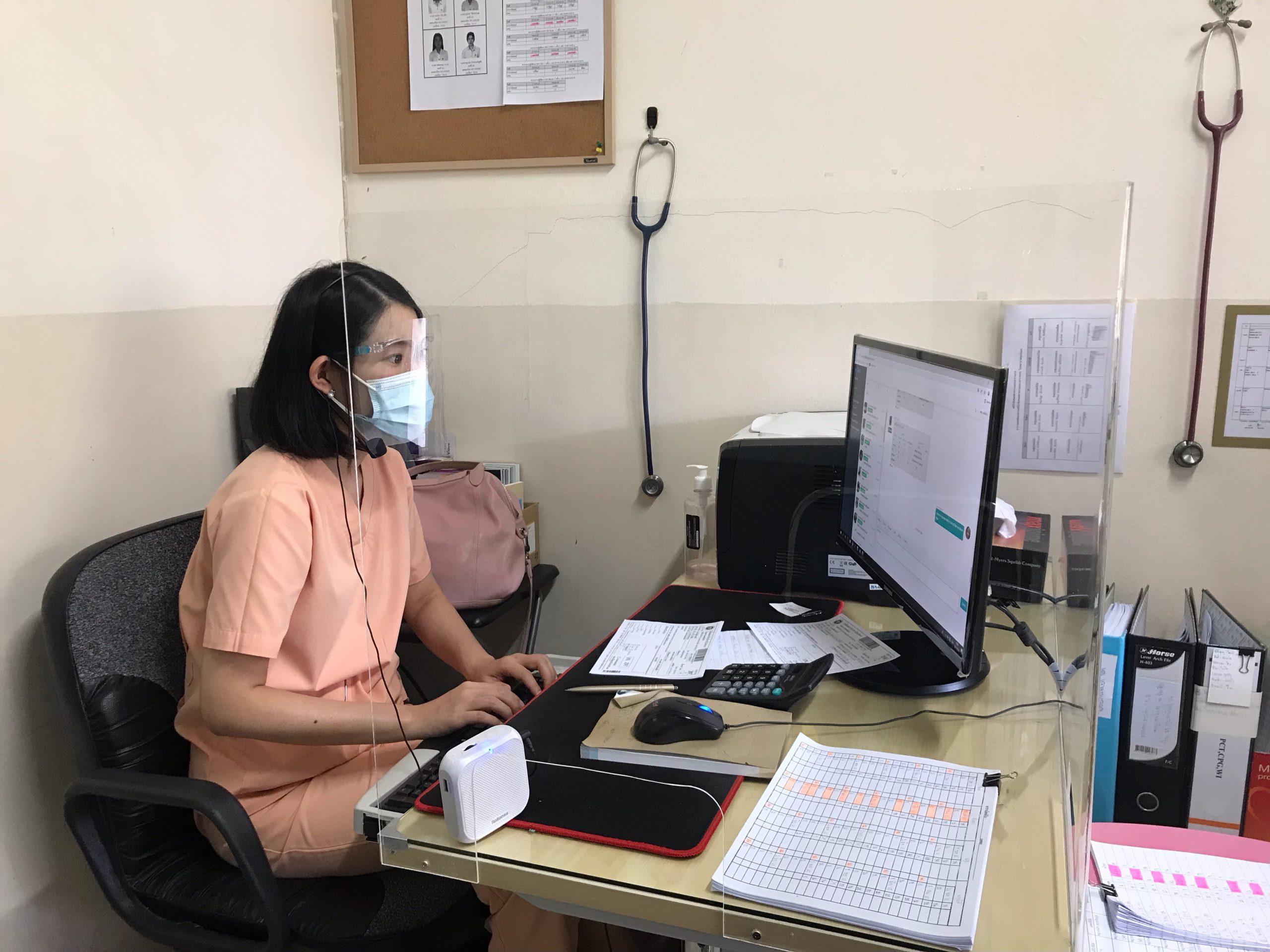Guidelines of using a telemedical system for management of chronic diseases in public hospitals
Example of Dietz Application Protocols (Case Study of Bhuddasothorn Hospital)
Introduction to Bhuddasothorn Hospital
Bhuddasothorn Hospital is a central hospital in Chachoengsao Province. Formerly known as Mueang Chachoengsao District Hospital, the 595-bed provincial hospital has been certified by the Healthcare Accreditation Institute (Public Organization, HAI) on September 26, 2012. Moreover, the hospital was approved the 3rd Re-Accreditation on December 14, 2018. In addition, the hospital has various specialized centers as follows:
- Cardiovascular department level 3
- Cancer department level 3
- Accident department level 3
- Neonatal department level 2
Currently, Bhuddasothorn Hospital operates under Mrs. Sombat Chutimanukul, M.D., the director of Bhuddasothorn Hospital from October 30, 2013. She has developed a vision to use telemedicine technology to improve the medical system, more convenient and valuable for patients. It found that the adoption of telemedicine, the Dietz application, started in certain types of diabetes patients, beneficial, especially during the pandemic of Coronavirus Disease 2019 (COVID-19). It can reduce the number of such patients who have to see a doctor at the hospital, improves disease monitoring, avoid overcrowding problems in the hospital, and reduces contact between medical professionals and patients.
A group of patients at the hospital chose to start a trial of the Dietz application
- Type 1 Diabetes
- Gestational Diabetes
- Patients with diabetes caused by genetic disorders, the pancreas is unable to produce insulin
Note: The hospital trial the Dietz application with these patients first because they must carefully control the meal. Carbohydrate intake is required for each meal to maintain glucose levels, and doctors need to monitor them closely. Once the trial of the system is stable, the hospital will start expanding the size of the users in type 2 diabetes.
Examples of each party’s functionality based on visits
Visit 1 (On-site at the hospital)
Physician
- The physician examines and diagnoses the disease. Determine the types of diabetic
- Determine the number of carbohydrates in each meal that suits the patient
- Plan frequency of self-monitoring blood glucose Typically, about four times/day: before breakfast, lunch, dinner, and before bedtime.
- Determine the appropriate insulin types and dose.
- Plan the next appointment date (frequency depends on the severity of the symptoms and the readiness self-care of the patient).
Nurse
- Describe the procedures and details related to the treatment plan
- Teach how to check the blood glucose levels at home, as well as take notes in a notebook
- Provide the tools/equipment related to self-examination of blood glucose levels, such as blood glucose meter, fingertip needles, and blood glucose test strip
- Send patients to a nutritionist to learn how to count the number of carbohydrates each meal
- Send patients to the pharmacist to learn how to self-administration of insulin correctly
- Send patients to the ophthalmologist for retinal examination in all cases
Dietitian/Nutritionist
- Recommended food types suitable for patients
- Teach patients how to count the number of carbohydrates in each meal and note the information of the food’s intake in the notebook
Pharmacist
- Educate patients about the types of insulin injections received and teach them how to insulin self-administration correctly.
Visit 2 (On-site at the hospital)
Physician
- Follow-up and evaluation of the treatment (may adjust the medicine accordingly)
- Assess patient readiness to start using the Dietz application (Telemedicine platform)If the patient’s condition is not stable, blood glucose levels cannot be controlled; they may have to visit on-site until they are ready to use the Dietz application.
- The physician typically prescribing the medicine for one month (it may be shortened/longer as appropriate)
- In case the patients ready to use telemedicine, the physician will inform patients to follow-up using the Dietz application by meeting the doctor via a platform every Monday to monitor the medicine used and follow-up care (If during the week patients have questions, they can be asked the medical professional via the application platform promptly).
- Confirm an appointment for the on-site visit, typically a one-month appointment from the last on-site visit
Nurse
- Describe the process for meeting the doctor via Dietz telemedicine, asking the patient’s consent to use the Dietz application
- Request patients to sign in an informed consent form to use the Dietz application to communicate between the patients and medical staff such as physicians, nutritionists, etc.
- The patient must register the application by scan a QR code (the registration time needed is about 5-10 minutes per case).
- Describe the procedures and details related to using the Dietz application, such as take notes on the blood glucose levels, meals, etc.
Visit 3 (meeting via Dietz Telemedicine Application)
Physician
- Open the Dietz application
- Follow-up a home self-care through the Dietz application (via chat or video call as appropriate)
- May adjust the dose of insulin and the number of carbohydrate intake each meal accordingly
- Notify the next appointment (typically meeting online via the Dietz application every Monday until reaching the next meeting at the hospital, generally, one month from the last on-site visit)
Nurse
- Open visits and record relevant patient information into the hospital system (e.g., in the case of Bhuddasothorn Hospital using HosXP system to record OPD chart of the patient)
Example of real-used Dietz application


Flow chart of Dietz application protocol

Flow chart ภาพรวมการกระบวนการรักษาสำหรับผู้ป่วย



Interdisciplinary projects at Bhuddasothorn Hospital :
Dr.P.D. Oranisha Amornriyakul, M.D.
Dr. Chanachai Chandrakitti physician
Mrs. Jaruwan Rattanamongkolkul, Nurse
Ms. Edi Aree Pomprasit, Nurse
M.D., M.D. Artitaya Naknakarin, pharmacist
M.D., M.D. Supattra Poomprasert, Pharmacist
M.D., M.D. Bunyaporn Enasamran, Pharmacist
M.D., M.D. Lakkhana Boonmak, pharmacist
Ms. Pakon Yenjai, Nutritionist
Protocol Dietz Author: Dr. Boonnada Pamornpathomkul, B.Sc. Pharm, Ph.D. Pharmaceutical Technology
แนวทางการนำระบบเทเลเมดิซีนสำหรับการดูแลโรคเรื้อรังไปประยุกต์ใช้ในโรงพยาบาลของรัฐ
ตัวอย่าง Protocol การใช้งานแอพลิเคชัน Dietz (กรณีศึกษาของโรงพยาบาลพุทธโสธร)
โรงพยาบาลหรือคลินิกสนใจใช้งานติดต่อ phongchai@dietz.asia หรือที่ www.facebook.com/Dietz.asia
Download Protocol Dietz
 ไทย
ไทย
 Eng
Eng  seolounge
seolounge
